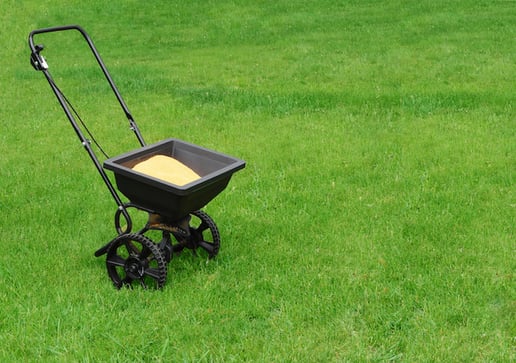As the vibrant green hues of a newly fertilized lawn beckon us outdoors, it’s crucial to understand the invisible hazards that lurk beneath the lush blades. Chemical fertilizers, often applied to enhance lawn health, can pose risks to both humans and pets if not handled with care. In this comprehensive guide, we delve into the essential question: how long to stay off grass after fertilizer to ensure safety?

Image: animalia-life.club
Fertilizers and Their Impact on Lawn Health
Fertilizers provide essential nutrients, such as nitrogen, phosphorus, and potassium, to promote healthy lawn growth. However, excessive or improperly applied fertilizers can lead to burn spots, nutrient imbalances, and soil contamination. Chemical fertilizers, in particular, rely on synthetic compounds that can be harmful if not used according to instructions.
Understanding Fertilizer Toxicity
The toxicity of fertilizers is primarily determined by the type and concentration of chemicals used. Nitrogen-based fertilizers, common in most lawn fertilizers, can be especially hazardous in high doses. If ingested or absorbed through the skin, these chemicals can cause skin irritation, eye damage, and in severe cases, respiratory issues.
Recommended Waiting Periods
To minimize exposure to fertilizer chemicals, it’s essential to adhere to the recommended waiting periods before allowing access to the treated area. These periods vary depending on the type and concentration of fertilizer used, but general guidelines recommend the following:
- Granular Fertilizers: Wait 24-48 hours before watering and allowing foot traffic.
- Liquid Fertilizers: Wait 2-3 hours before watering and allowing foot traffic.
- Weed and Feed Fertilizers: Wait 48-72 hours before watering and allowing foot traffic.
- Pets: Keep pets off the treated area for at least 72 hours after application.
It’s important to note that these are general guidelines, and actual waiting periods may vary based on factors such as weather conditions and fertilizer type. Always refer to the manufacturer’s instructions for specific recommendations.

Image: blog.lushlawn.com
Protecting Your Loved Ones
By following these waiting periods, you can effectively guard your family and pets from the potential hazards associated with fertilizer use. Children, pregnant women, and individuals with compromised immune systems are particularly vulnerable to chemical exposure, making it even more crucial to exercise caution.
During the waiting period, keep children and pets indoors or confined to an untreated area. If accidental contact occurs, immediately wash the affected area thoroughly with soap and water. In case of serious symptoms or ingestion, seek medical attention promptly.
Alternative Fertilizing Methods
If you’re concerned about fertilizer toxicity, consider exploring alternative methods of lawn care. Organic fertilizers, such as compost or manure, provide natural nutrients without the risk of chemical exposure. Additionally, slow-release fertilizers can minimize the need for frequent applications, reducing potential hazards.
How Long To Stay Off Grass After Fertilizer
Conclusion
Understanding how long to stay off grass after fertilizer is paramount for protecting your health and well-being. By adhering to the recommended waiting periods, you can ensure the safety of your loved ones and pets while still enjoying the benefits of a lush and thriving lawn. Remember, knowledge is power, and by implementing these guidelines, you can confidently navigate the world of lawn care with confidence and peace of mind.






